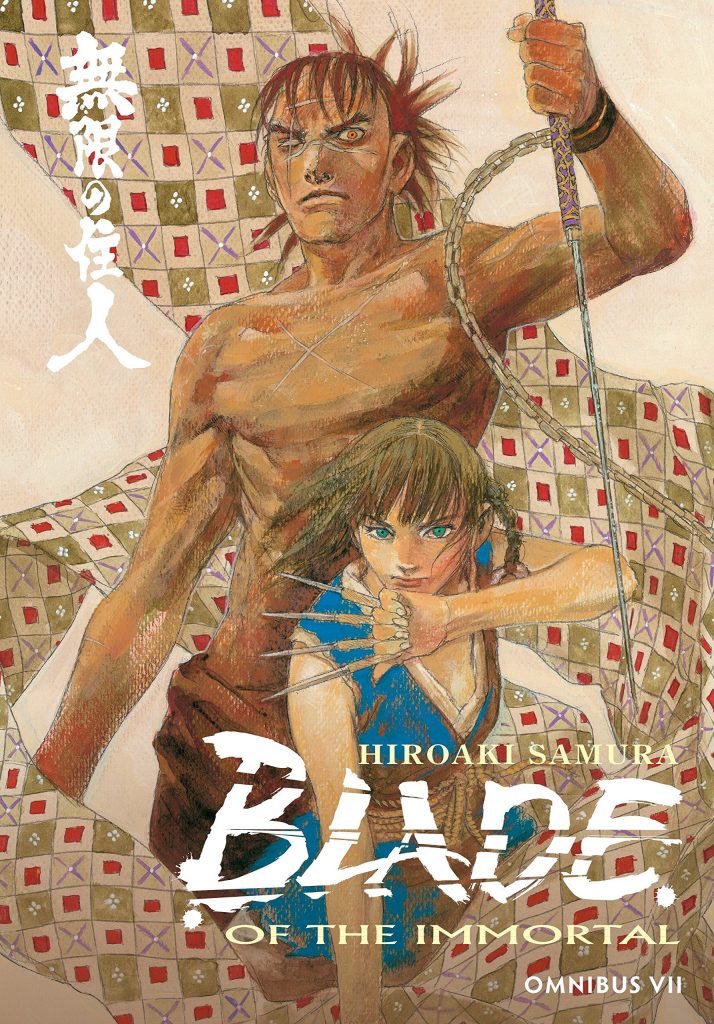Review by Frank Plowright
Perhaps those with knowledge of manga in the original Japanese can point to something similar, but in the entirety of comics available in English there’s been nothing like Hiroaki Samura’s astonishing dungeon sequence. For over eight hundred pages of the previous Omnibus Manji was chained to a dungeon wall while brutal experiments took place attempting to test the limits of his regenerative capacity. Translate that page count to a standard monthly title and that’s 36 issues, and while he wasn’t on every page, his torture occupied around half of them, and he’s still there. Manji doesn’t know it, but Rin and her companions are discovering the full horrors of the vast castle dungeon area, now certain he’s located somewhere within.
What was originally gathered as Demon Lair and Demon Lair II is a phenomenal action sequence. Samura’s able to slide into a zombie scene, finds the space for several explanations including the origin of the map Rin’s using and that of Dōa’s facial tattoo, and maintains a relentless thrilling pace for around four hundred pages, never short of a new danger or twist. Rin’s route to Manji requires occupying the many guards, and releasing the imprisoned is the best method, but among them are some disturbed and dangerous individuals also well capable of threatening her life. Let’s not pretend Manji isn’t eventually freed, but once that occurs there’s the problem of getting back through the chaos Rin’s created. That, however, isn’t enough for a master storyteller, and Samura ups the ante massively by adding a new threat that no amount of swordsmanship is going to affect.
Because this sequence is so action oriented it’s sometimes difficult to follow exactly what’s happening via the art, although this could be a deliberate attempt to mimic the confusion of events piling on top of each other rapidly. Otherwise Samura is astonishingly composed, impressing with the delicacy of the linework, the imagination of the layouts and the expressions on faces often telling the story. Manji’s anticipation conveyed by his eyes narrowing and a slight upturn to the mouth occurs again and again throughout Blade of the Immortal, making it a defining image.
The final quarter was published as Footsteps in paperback, and it’s the wave breaking after the sustained intensity of the preceding 1200 pages. There’s not an awful lot of action, but Sakura instead saturates the pages with foreshadowing and emotion. It’s a series rule that no-one is presented as black or white, and even the most irredeemable of characters has some shades of grey, so for anyone who’s followed the series to date the conversation set up ending this volume is a stunning moment. Before then Japanese honour comes into play. There’s a price to be paid for failure, but a month’s stay of execution is permitted, so a new group of talents is gathered in an attempt to wipe out the Ittō-ryū once and for all. However, they have plans of their own, and won’t go quietly. As ever, Samura supplies a bunch of new characters we want to learn about, visually distinctive enough that their appearance tells a story.
This is another stunning volume, switching mood masterfully, and Omnibus VIII begins the events concluding Blade of the Immortal.





